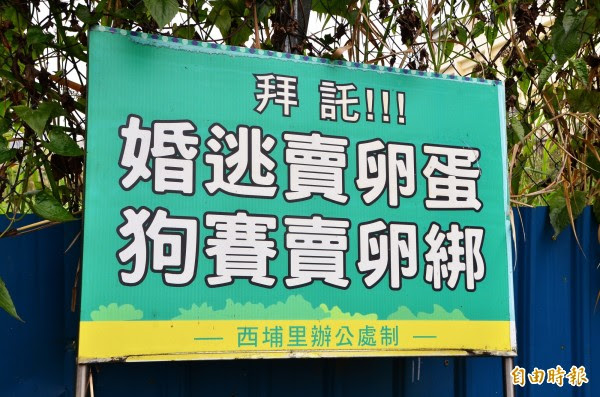Archive for Phonetics and phonology
June 25, 2019 @ 9:33 am· Filed by Victor Mair under Language and politics, Names, Phonetics and phonology
Many countries in Central Asia are named with words that end in -stan, which is a Persian term (ـستان [-stān]) meaning "land" or "place of", thence "country"; it is synonymous and cognate with the Sanskrit word sthāna स्थान (from Indo-Iranian *stanam "place," literally "where one stands," from PIE *sta-no-, suffixed form of root *sta- "to stand, make or be firm." Source). Consequently, we refer to these countries as "the stans":
Afghanistan, Kazakhstan, Kyrgyzstan, Pakistan, Tajikistan, Turkmenistan, and Uzbekistan
Note, however, that five of these names have an -i- before the -stan, while two — Kazakhstan and Kyrgyzstan — lack the -i-.
Since the Uyghurs may one day have a country of their own with a name ending in -stan, I wondered whether there is a rule governing whether it should be "Uyghurstan" or "Uyghuristan".
Read the rest of this entry »
Permalink
June 17, 2019 @ 8:39 am· Filed by Victor Mair under Language teaching and learning, Phonetics and phonology
Benjamin Hull shared a unique application of Hanyu Pinyin that he noticed on a Pizza Hut (Bìshèng Kè) menu in Ānhūi Shěng Wúhú Shì (where he is currently studying Pǔtōnghùa) — see photos below. Ben notes:
…the use of Pīnyīn as a guide to English pronunciation is new for me. For a moment I thought it was Yīngyǔ yīnbiāo ("English phonetic symbols") as taught in schools, but I have never seen [ou] used to transcribe the relevant vowel in Chinese pedagogical usage (/əʊ/ is listed as the appropriate transcription in the Bǎidù entry for yīnbiāo). It must be Pīnyīn, which leads to a few interesting notes.
Read the rest of this entry »
Permalink
June 11, 2019 @ 8:45 am· Filed by Mark Liberman under Computational linguistics, Phonetics and phonology
Babies start making speech-like vocalizations long before they start to produce recognizable words — various stages of these sounds are variously described as cries, grunts, coos, goos, yells, growls, squeals, and "reduplicated" or "variegated" babbling. Developmental progress is marked by variable mixtures of variable versions of these noises, and their analysis may provide early evidence of later problems. But acoustic-phonetic analysis of infant vocalizations is hindered by the fact that many sounds (and sound-sequences) straddle category boundaries. And even for clear instances of "canonical babbling", annotators often disagree on syllable counts, making rate estimation difficult.
In "Towards automated babble metrics" (5/26/2019), I toyed with the idea that an antique work on instrumental phonetics — Potter, Koop and Green's 1947 book Visible Speech — might have suggested a partial solution:
By recording speech in such a way that its energy envelope only is reproduced, it is possible to learn something about the effects of recurrences such as occur in the recital of rimes or poetry. In one form of portrayal, the rectified speech envelope wave is speeded up one hundred times and translated to sound pattern form as if it were an audible note.
Read the rest of this entry »
Permalink
May 31, 2019 @ 6:29 am· Filed by Mark Liberman under Language and culture, Phonetics and phonology
Malin Fezehai, "In Turkey, Keeping a Language of Whistles Alive", NYT 5/30/2019:
Muazzez Kocek, 46, is considered one of the best whistlers in Kuşköy, a village tucked away in the picturesque Pontic Mountains in Turkey’s northern Giresun province. Her whistle can be heard over the area’s vast tea fields and hazelnut orchards, several miles farther than a person’s voice. When President Recep Tayyip Erdogan of Turkey visited Kuşköy in 2012, she greeted him and proudly whistled, “Welcome to our village!”
She uses kuş dili, or “bird language,” which transforms the full Turkish vocabulary into varied-pitch frequencies and melodic lines. For hundreds of years, this whistled form of communication has been a critical for the farming community in the region, allowing complex conversations over long distances and facilitating animal herding.
Read the rest of this entry »
Permalink
May 28, 2019 @ 10:12 am· Filed by Mark Liberman under Computational linguistics, Phonetics and phonology, Recitation
Following up on Saturday's post "Towards automated babble metrics", I thought I'd try the same technique on some adult speech, specifically William Carlos Williams reading his poem "The Red Wheelbarrow".
Why might some approach like this be useful? It's a way of visualizing syllable-scale frequency patterns (roughly 1 to 8 Hz or so) without having to do any phonetic segmentation or classification. And for early infant vocalizations, where speech-like sounds gradually mix in with coos and laughs and grunts and growls and fussing, it might be the basis for some summary statistics that would be useful in tracing a child's developmental trajectory.
Is it actually good for anything? I don't know . The basic idea was presented in a 1947 book as a way to visualize the performance of metered verse. Those experiments didn't really work, and the idea seems to have been abandoned afterwards — though the authors' premise was that verse "beats" should be exactly periodic in time, which was (and is) false. In contrast, my idea is that the method might let us characterize variously-inexact periodicities.
Read the rest of this entry »
Permalink
May 13, 2019 @ 7:42 am· Filed by Victor Mair under Bilingualism, Phonetics and phonology, Pronunciation, Signs, Writing systems
Public notice in a ward in Tainan, Taiwan:

(Source)
Read the rest of this entry »
Permalink
May 6, 2019 @ 4:48 pm· Filed by Victor Mair under Language and advertising, Phonetics and phonology, Pronunciation, Signs, Writing systems
Jenny Chu sent in this photograph of an ad on a Hong Kong subway car:

Read the rest of this entry »
Permalink
April 26, 2019 @ 7:51 am· Filed by Victor Mair under Language and computers, Language and education, Language teaching and learning, Phonetics and phonology, Reading, Writing, Writing systems
In several recent posts, we've been discussing the most efficient, least painful way to acquire facility with hanzi / kanji / hanja 漢字 ("Sinographs; Chinese characters"). Lord knows there are endless numbers of them and they are so intricately constructed that it is an arduous task to master the two thousand or so that are necessary for basic literacy.
It would be so much easier to learn the Sinographs if language pedagogues would provide phonetic annotations for each character. Better yet, the phonetic annotations should be divided into words with spaces between them according to the official orthographic rules.
Read the rest of this entry »
Permalink
April 21, 2019 @ 7:01 pm· Filed by Victor Mair under Borrowing, Historical linguistics, Language and archeology, Language and biology, Language and culture, Language and history, Phonetics and phonology, Reconstructions
This post was prompted by the following comment to "The emergence of Germanic" (2/27/19):
…while riding horses _in battle_ is post-Bronze Age (and perhaps of questionable worth at any time), I think riding in general is older, and probably (assuming the usual dating of PIE) common Indo-European.
The domesticated horse, the chariot, and the wheel came to East Asia from the west, and so did horse riding:
Mair, Victor H. “The Horse in Late Prehistoric China: Wresting Culture and Control from the ‘Barbarians.’” In Marsha Levine, Colin Renfrew, and Katie Boyle, ed. Prehistoric steppe adaptation and the horse, McDonald Institute Monographs. Cambridge: McDonald Institute for Archaeological Research, 2003, pp. 163-187.
Read the rest of this entry »
Permalink
April 11, 2019 @ 5:15 pm· Filed by Victor Mair under Diglossia and digraphia, Language and education, Orthography, Phonetics and phonology, Politics of language, Words words words
Science card given out to first grade students in Shenzhen, China:

Read the rest of this entry »
Permalink
April 5, 2019 @ 8:38 am· Filed by Victor Mair under Etymology, Morphology, Onomatopoeia, Phonetics and phonology
Yesterday, I was thinking of words to express "commotion", "(noisy) disturbance", etc. "Hustle bustle" and "hurly burly" quickly came to mind. Thinking analogically, "hubbub" also presented itself for consideration. Tangentially, "hullabaloo", "hoopla", "hoo-ha", and, through a process of inversion, "ballyhoo" and "brouhaha" also tagged along, but were less convincing as support for a thesis that was swiftly emerging. Namely, "h-b" words seem to be naturally configured for expressing an energetic state of affairs full of movement and din.
Read the rest of this entry »
Permalink
March 11, 2019 @ 7:01 am· Filed by Victor Mair under Etymology, Names, Phonetics and phonology, Spelling
I have a colleague at Penn who teaches medieval Arabic cultural history; his name is Paul Cobb. He used to teach at the University of Chicago.
I have a friend at the University of Chicago who teaches medieval Chinese cultural history; his name is Paul Copp. He received his PhD from nearby Princeton, which starts with a "P".
Boy, do I ever get them confused!
I mentioned this to Diana Shuheng Zhang, and she replied as follows:
Read the rest of this entry »
Permalink
March 8, 2019 @ 9:39 am· Filed by Victor Mair under Historical linguistics, Language and music, Phonetics and phonology, Pronunciation
This morning while shaving, as I was listening to the radio around 7:30 a.m., I heard a medley of songs by three artists, all with the same title: "Hold on". But a funny thing happened in all three of these renditions: whenever the singer pronounced the title phrase, it always came out as "hol don", at least to my ear. But I don't think it was just my ear, since several times they prolonged the "hol" syllable and emphasized the "d" at the beginning of the "don" syllable.
Read the rest of this entry »
Permalink


